North Carolina is a beautiful state boasting mountains that are lush with trees, lakes, and a gorgeous wild coastline. There are also bustling cities and sprawling suburbs full of trees. Because of its range of habitats and winter temperatures that do not tend to dip as low as in the north, it is a hospitable place for many different birds.
Keep reading to discover 21 of the most popular birds of North Carolina with photos!
Contents
1. Northern Cardinal
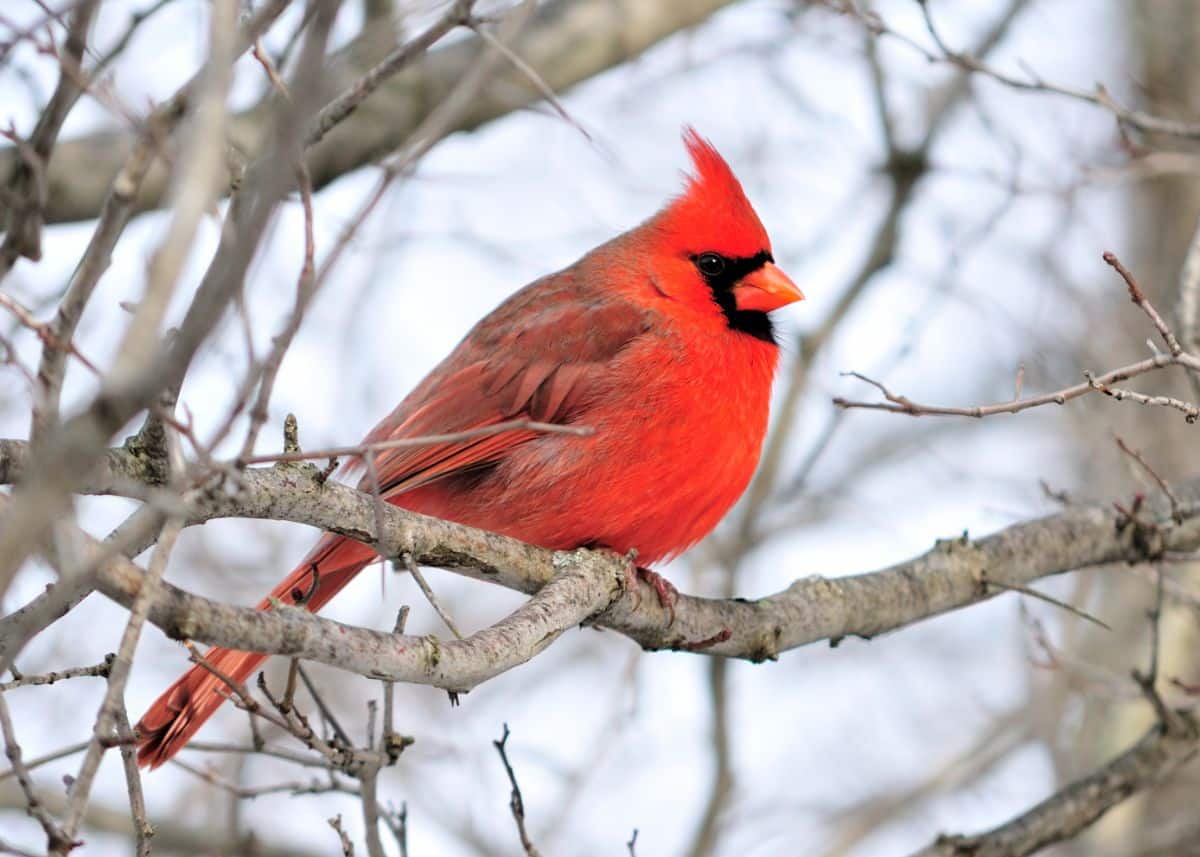
The northern cardinal is the state bird of North Carolina. This bright red bird strikes a statement in a yard. It is often seen near woodlands, hedgerows, and other semi-open areas. The cardinal doesn’t molt, so it always keeps its bright red color.
Female cardinals are one of the few female songbirds that sing. Aggressive when defending their nest, cardinals have been known to attack their own reflections.
2. Carolina Wren
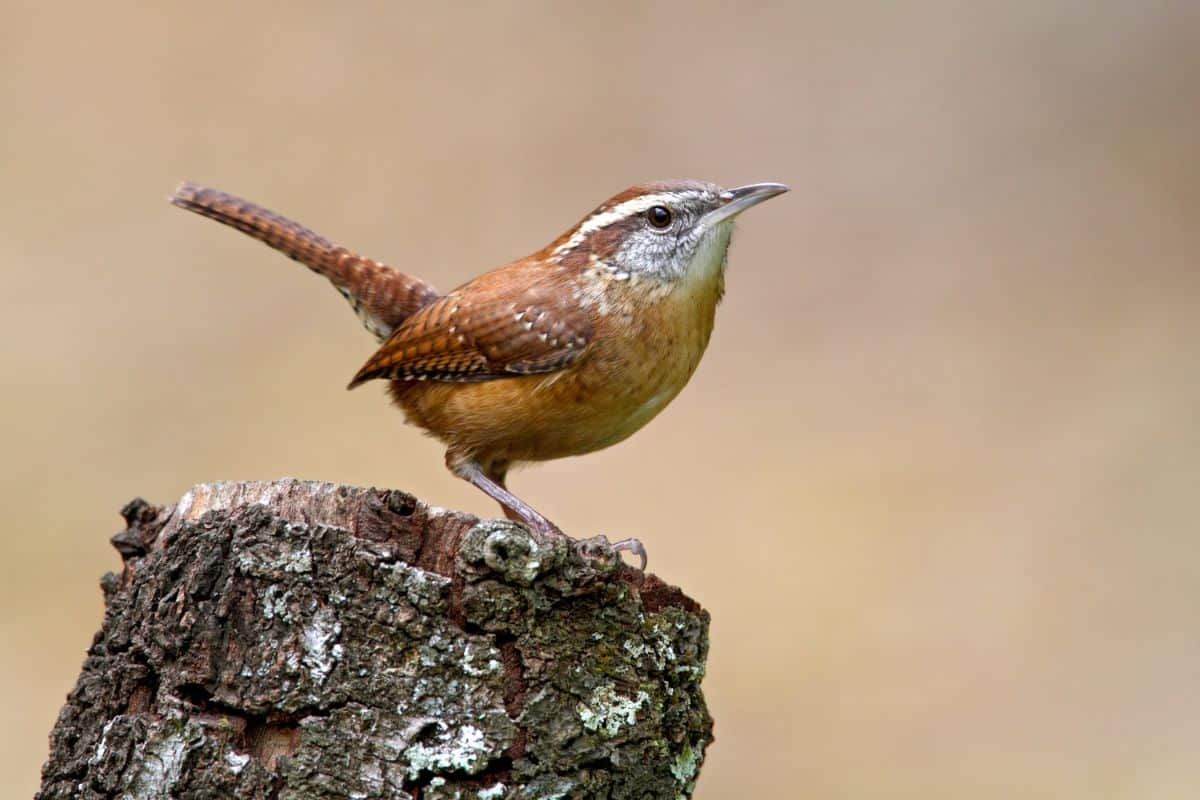
Carolina wrens are tiny and hard to see, but loud birds. They are often easy to hear. These wrens have rich brown feathers and a white stripe above their eyes. Only males sing the loud song. A male and female pair may bond at any time during the year and stay together for life.
3. Carolina Chickadee
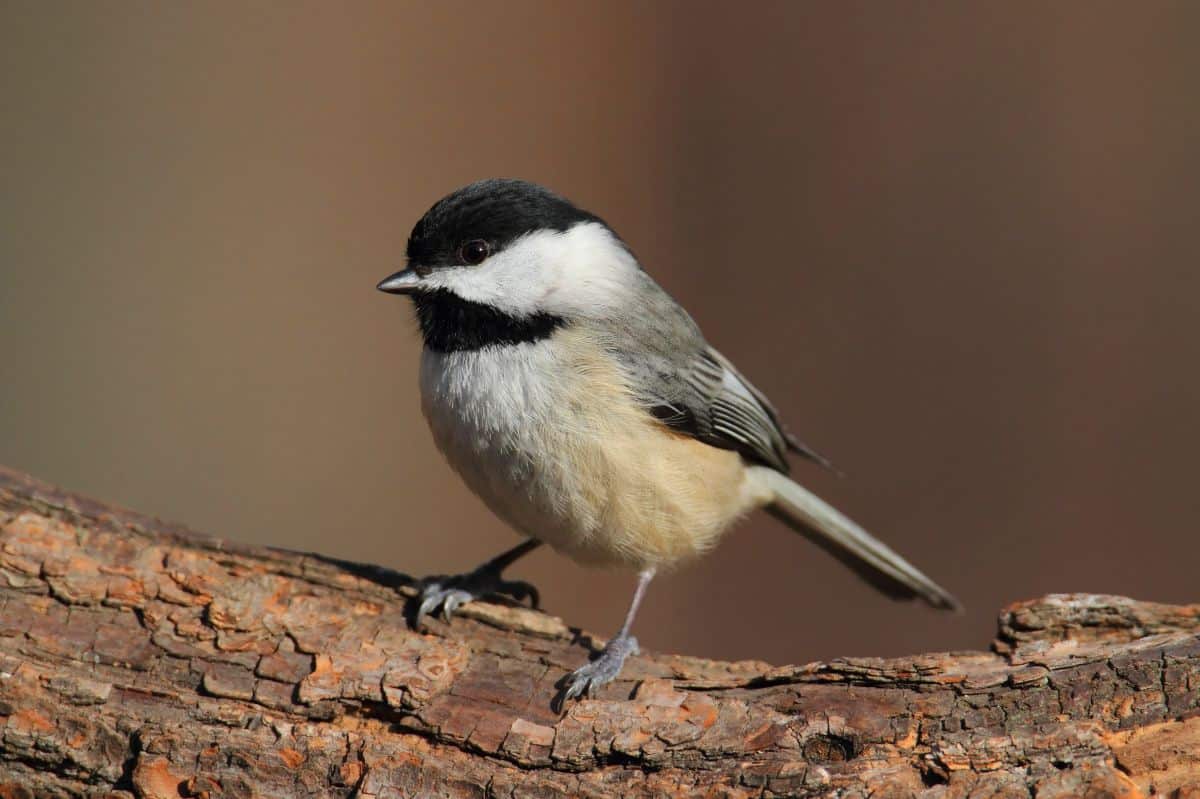
Named by the famous John James Audubon, the Carolina chickadee has an off-white belly, black head, white face, and gray wings. Bonded pairs don’t necessarily mate for life, especially if past breeding attempts between them have been unsuccessful.
They sometimes mate and hybridize when in the same area as black-capped chickadees. Hybrids between the two can sing the songs of either species or a song that is something in between.
4. Tufted Titmouse
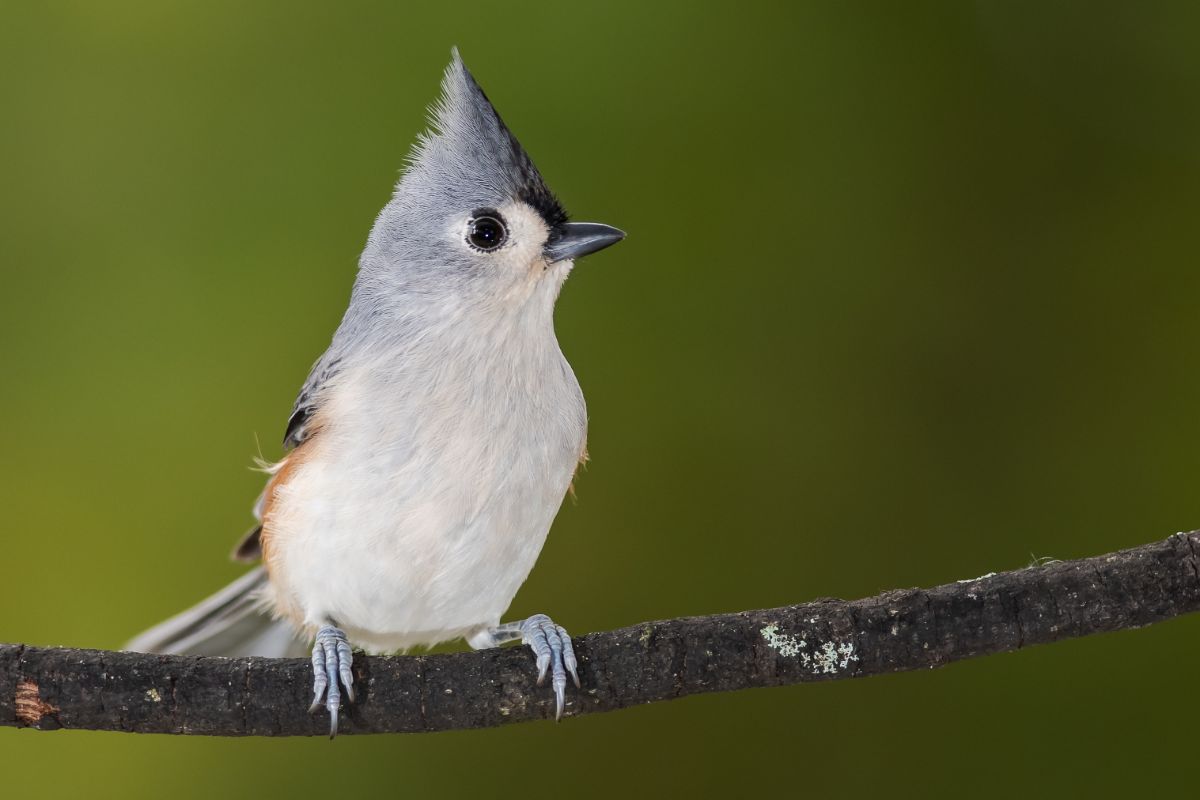
The tufted titmouse is a small gray bird with a bushy crest. It lives in deciduous forests, building its nests in cavities and holes. The tufted titmouse does not gather in flocks outside of breeding season. They hoard food in the fall and winter, often taking it from backyard bird feeders and hiding it away for later.
The tufted titmouse lines its nest with hair they pick from living animals. The hair in tufted titmouse nests has come from animals, including raccoons, mice, squirrels, rabbits, cats, dogs, and even people.
5. American Crow
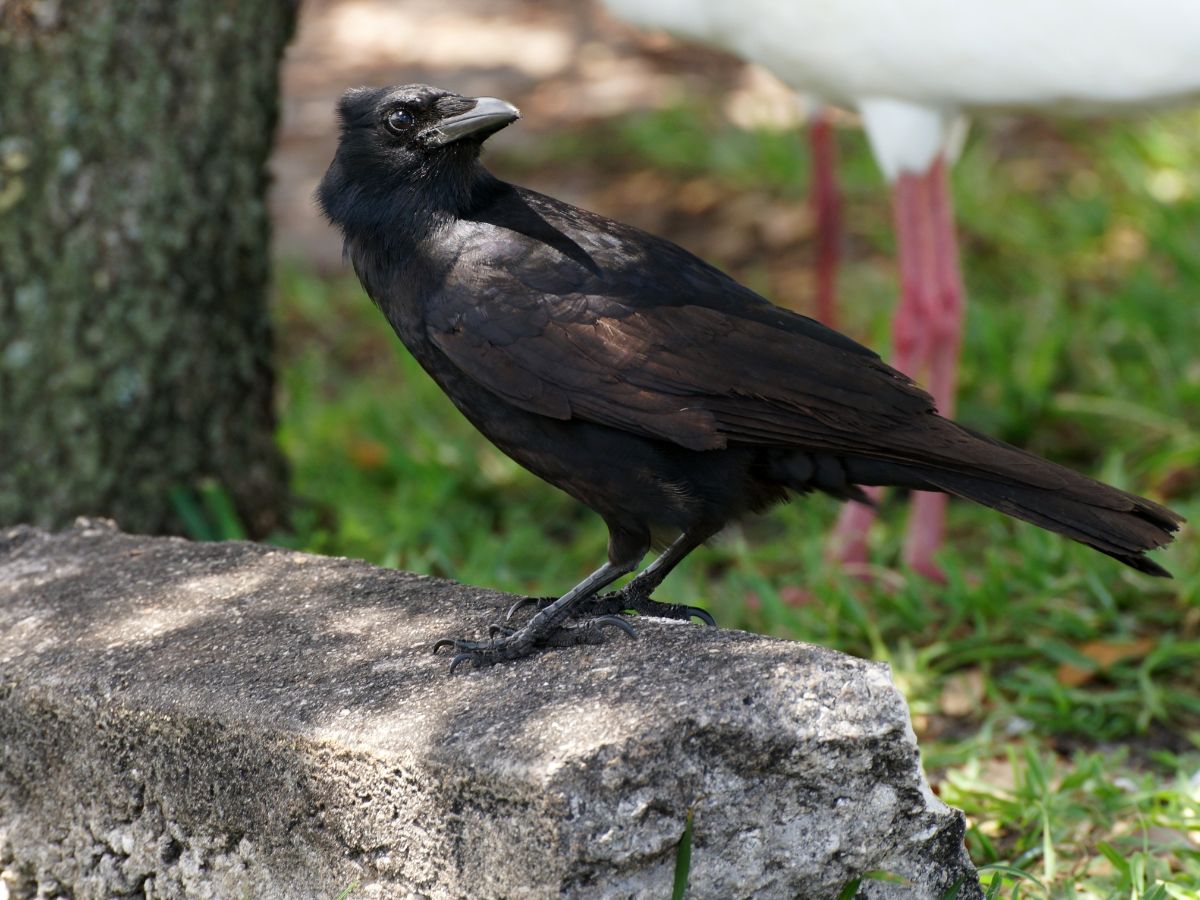
The American crow is well known for its hoarse caw and is seen everywhere, from beaches and backyards to woods and parking lots. They have a reputation for being willing to eat anything.
Crows gather and roost in numbers anywhere from a few hundred to two million in the winter. Because of their vast numbers, they can be a nuisance to humans.
American crows don’t begin breeding until they are two or four years old. Instead, they will help their parents raise their young.
6. Mourning Dove
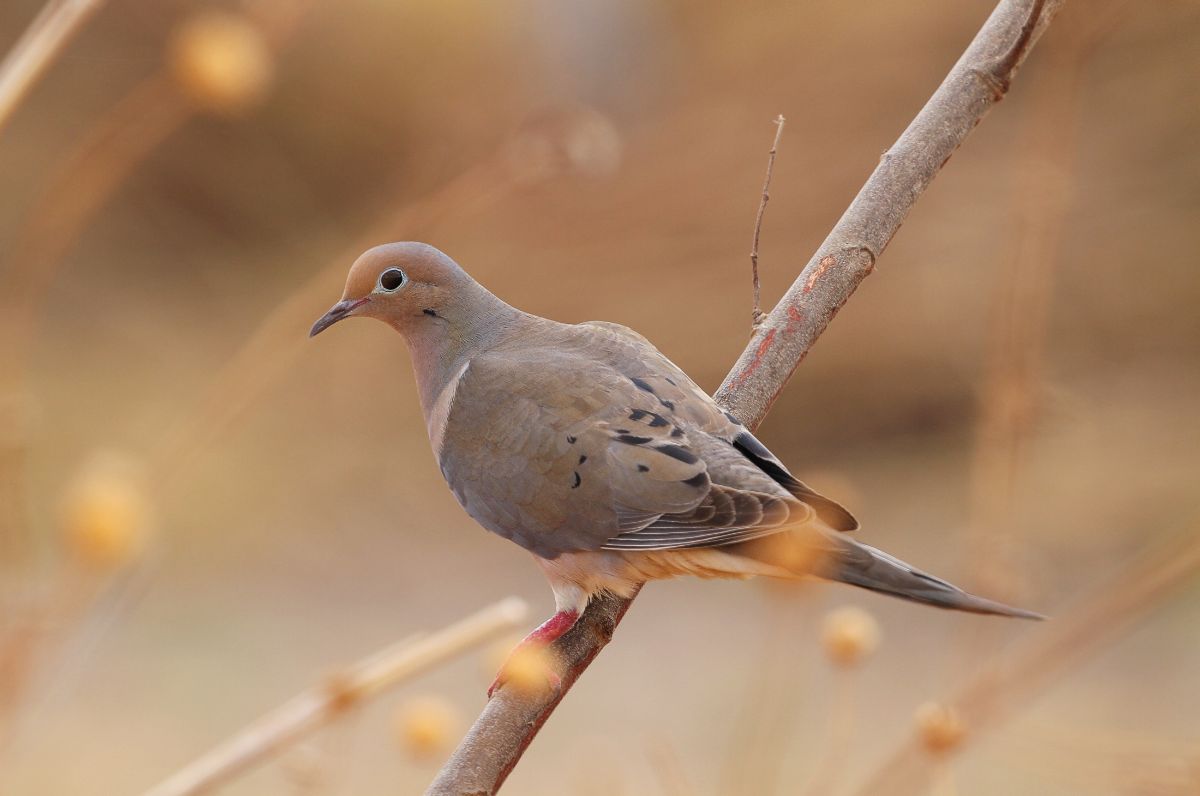
Mourning doves earned their name from their soft, lamenting calls. They forage for seeds, which they then swallow as fast as possible, storing them in an area of their esophagus called a crop.
They can fit a lot of seeds in their crop as they eat between 12% and 20% of their body weight daily. After swallowing their food, they fly somewhere safe to finish eating and digesting.
7. Red-bellied Woodpecker
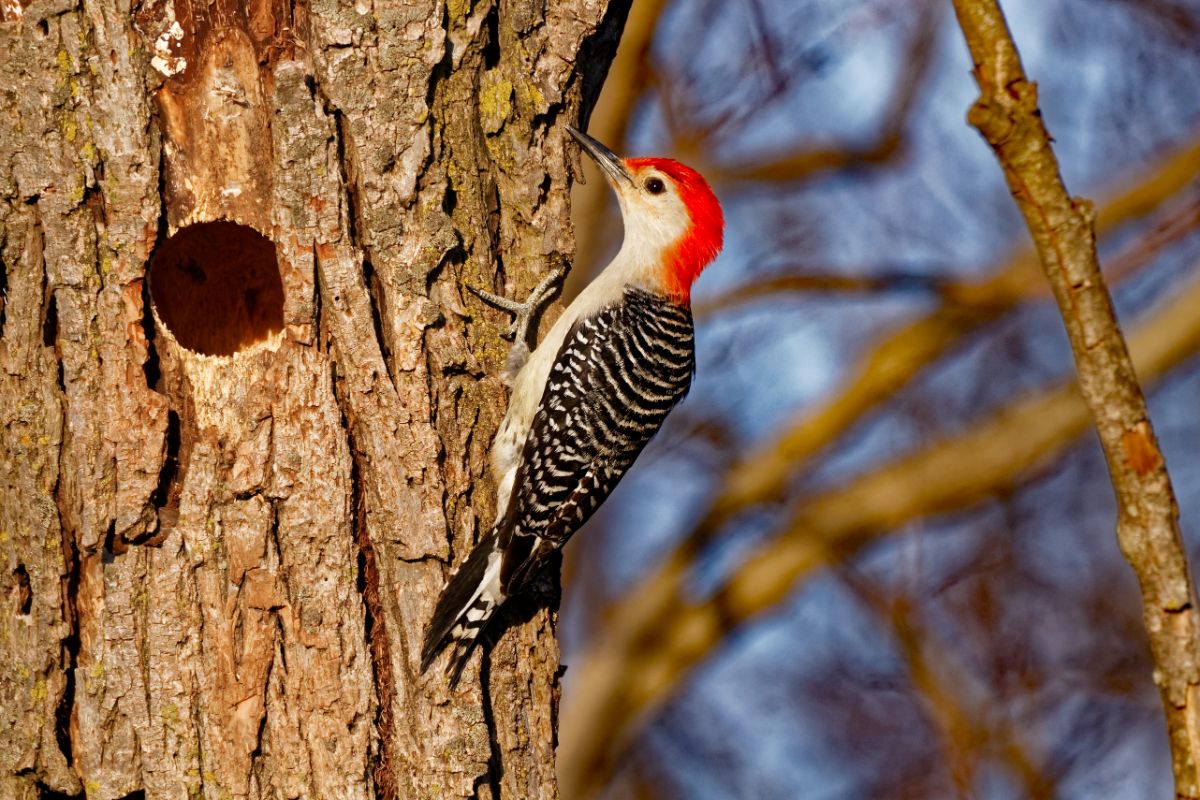
Red-bellied woodpeckers have bright red caps and black and white barred backs and can stick their tongues out 2” past its beak. Their barbed tongues and sticky spit make it hard to reach insects from inside trees. They often store other types of food in the cracks and crevices of trees and fences.
8. Blue Jay
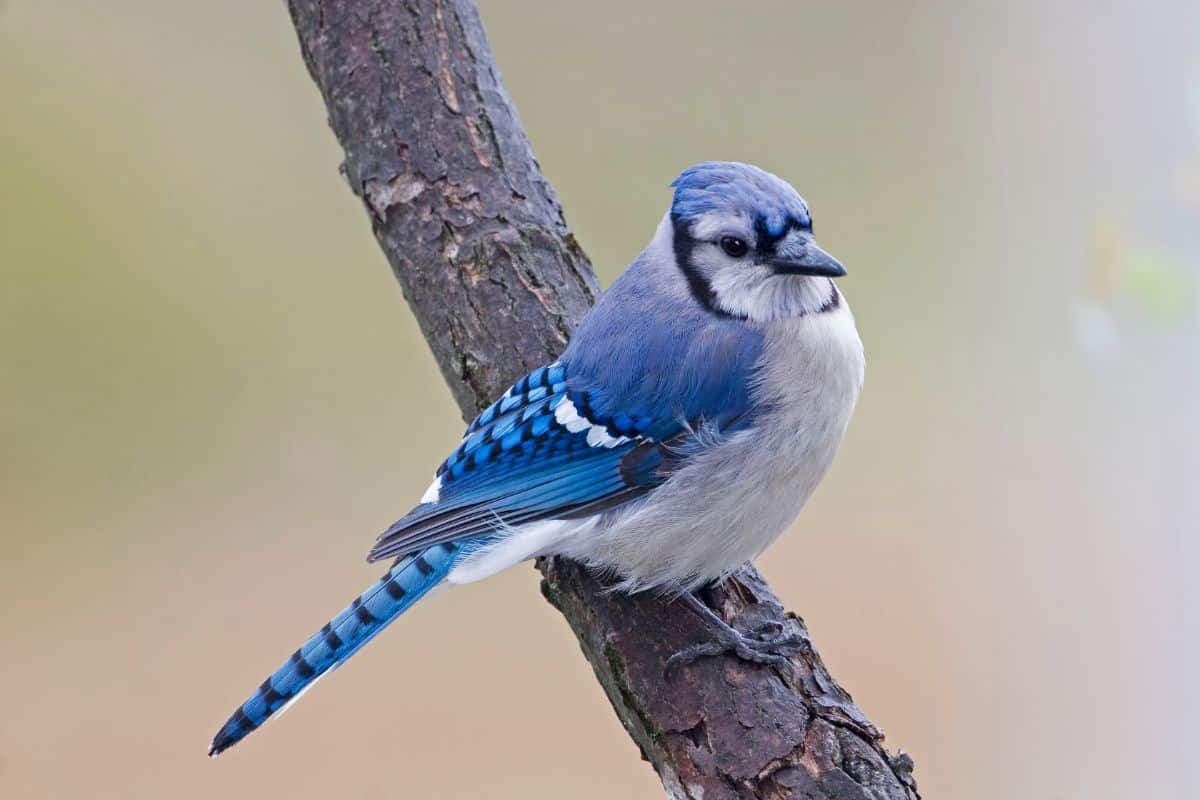
Blue jays are a gorgeous blue and white with a perky crest. They are a delight to see but can be very noisy. They can even imitate the sound of screaming hawks to either alert other jays of the presence of a predator or trick other jays into thinking a hawk is near.
The pigment in the blue jay’s feathers is melanin, which is brown. They appear blue because of how light scatters through their feathers’ cells.
9. American Robin
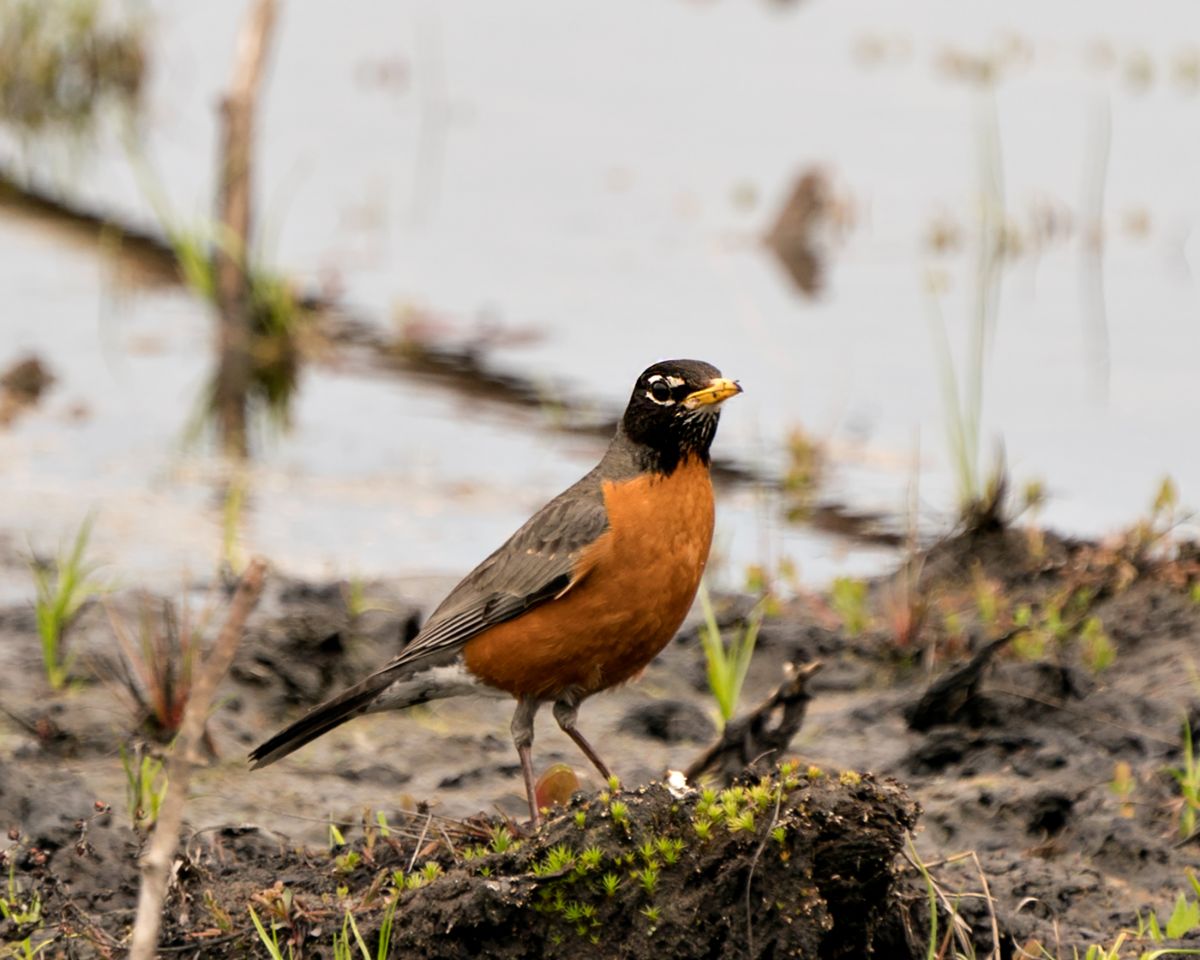
American Robins have a bright, cheery song and cut a colorful, cheery figure on a lawn with their black heads and orange breasts. You can find American robins in towns, cities, forests, and backyard bird feeders. They love to eat fruit but can become intoxicated on honeysuckle berries.
10. Eastern Bluebird
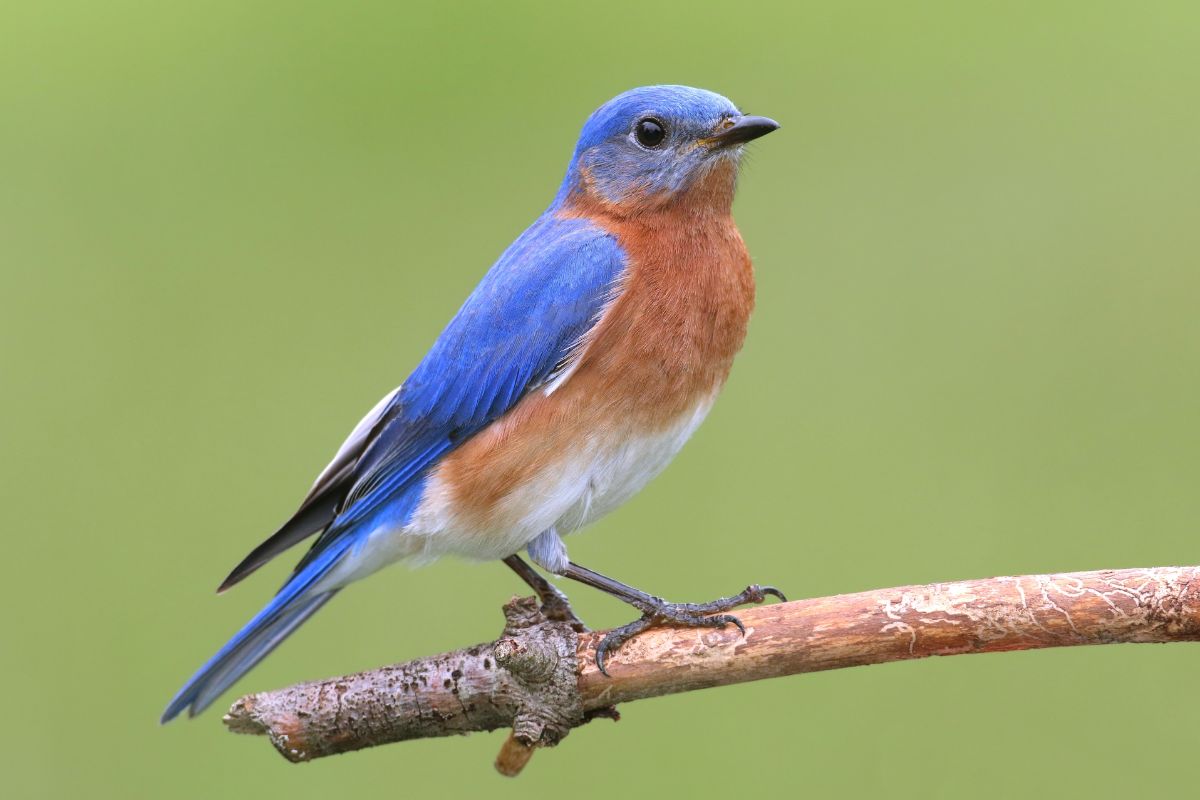
The eastern bluebird has a blue head and back, an orange breast, and a white belly. They eat insects, fruits, and berries and sometimes will eat bigger animals such as shrews, salamanders, tree frogs, and lizards.
The males mating display involves finding a nest cavity, bringing some nesting material, and causing a scene until he gets a female’s attention. When they mate, the female builds the nest and incubates the eggs.
11. Eastern Towhee
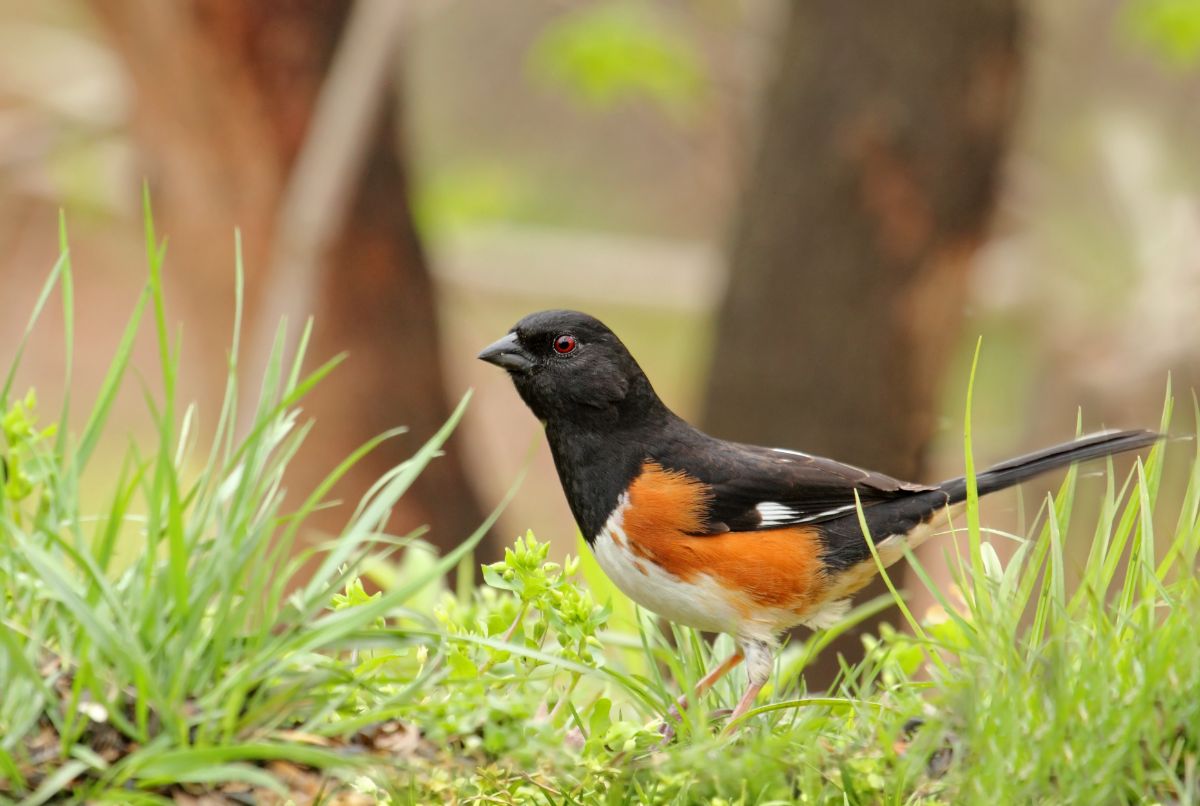
The eastern towhee lives in the undergrowth, but they are hard to see. However, they are very loud for their size. If you do see one, you will notice a black head, breast, and back, with a white belly and brown swoops under their wings.
Eastern towhees are solitary and territorial, often defending more space than they need.
12. Downy Woodpecker
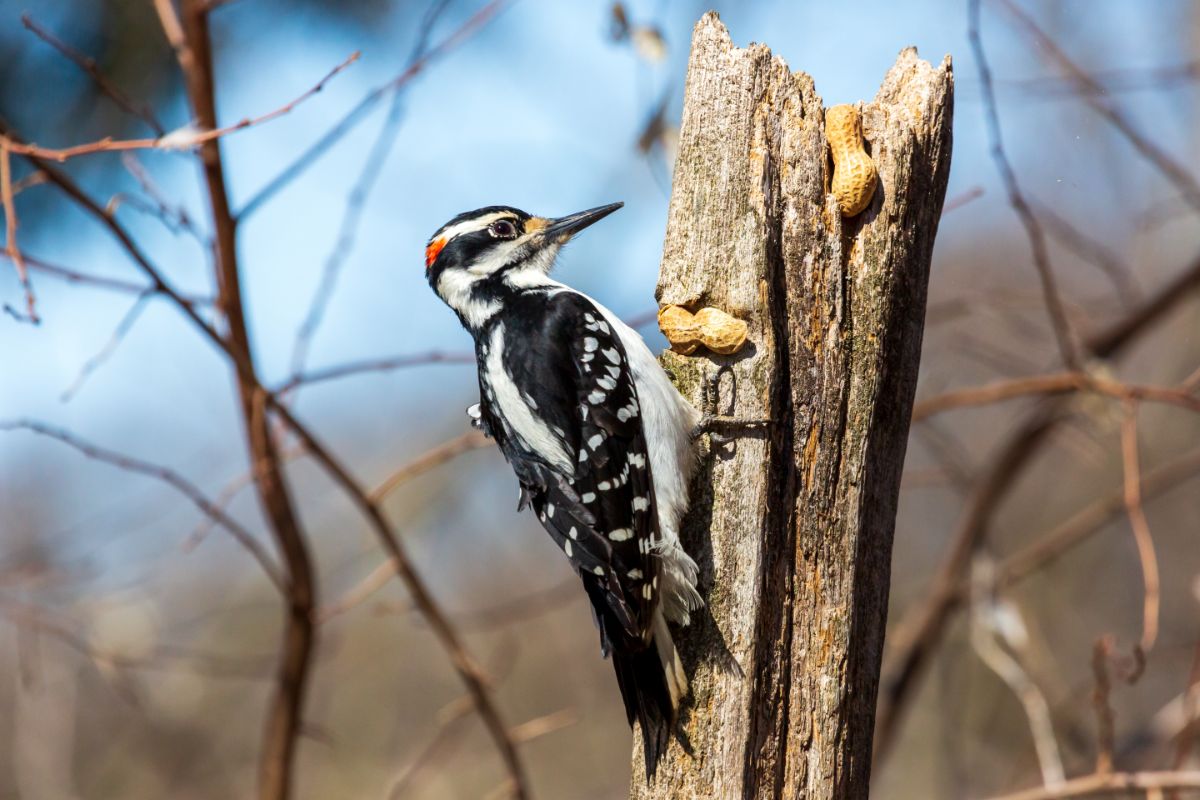
The downy woodpecker has red on the back of its head, contrasting its black and white striped face. Its chest, belly, and black wings have white spots.
They are foragers, but their recognizable pecking sound is not the sound of them eating, which is relatively quiet. Instead, it is used for communication in the species in the place of song.
13. Northern Mockingbird
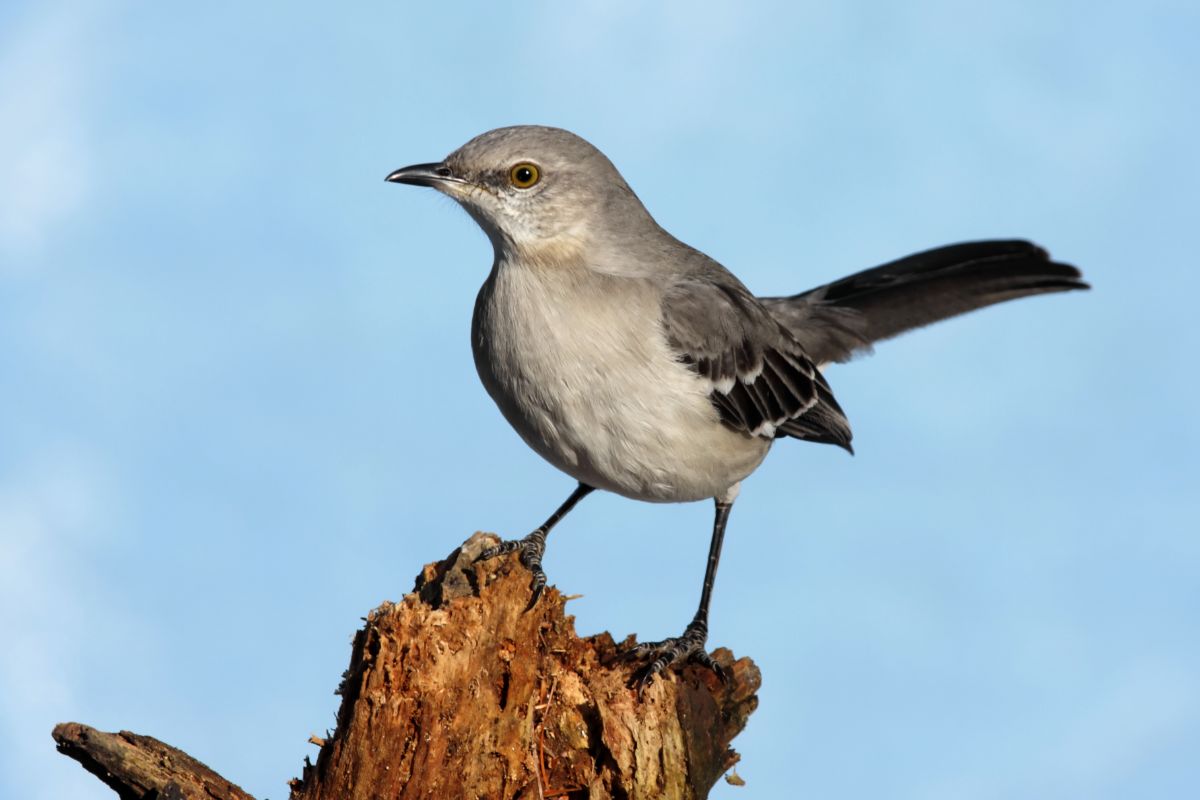
Northern mockingbirds have gray bodies with black on their wings. They sing all the time, even at night. Accomplished mimics, they can imitate many other species. Mockingbirds learn new songs all their lives, with some males learning up to 200 songs.
14. American Goldfinch
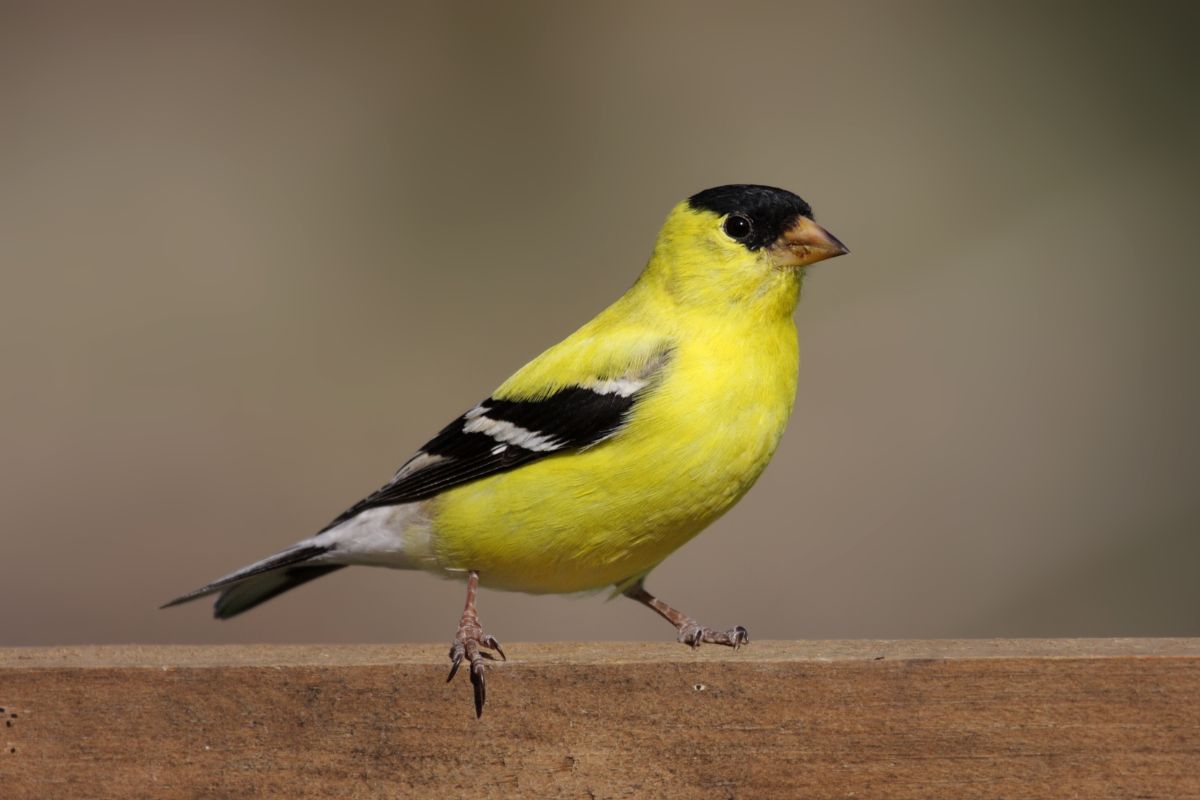
In spring, American goldfinches are bright yellow but less colorful outside the breeding season. They molt twice a year, in late winter and late summer. Breeding in June or July, later than most birds, they wait until the milkweed and thistle have grown the fibrous seeds they use for their nests and to feed their young.
15. Red-tailed Hawk
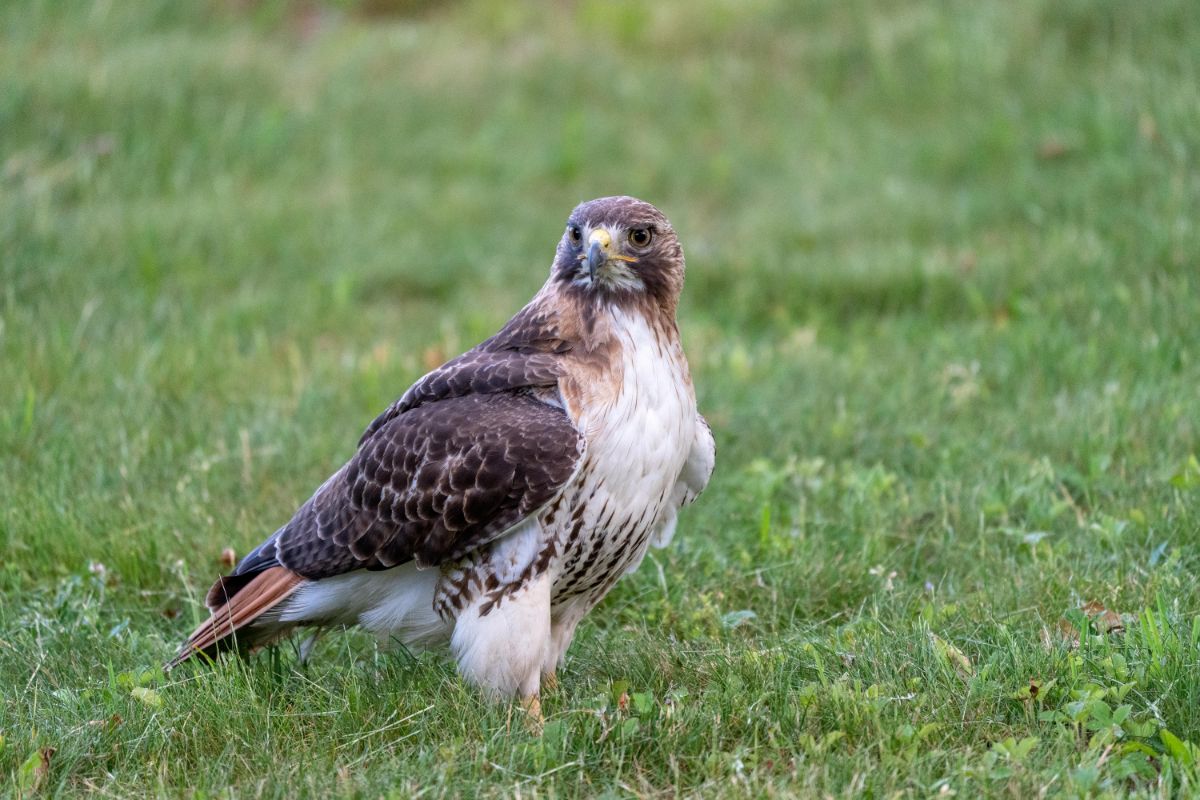
The red-tailed hawk is the most common hawk in North America. You can see it perched on telephone poles or flying over open fields in slow circles.
They have a loud, raspy scream and hunt animals, though they don’t usually eat cats and dogs. Made for flight, even the largest red-tailed hawk only weighs about three pounds.
16. Cooper’s Hawk
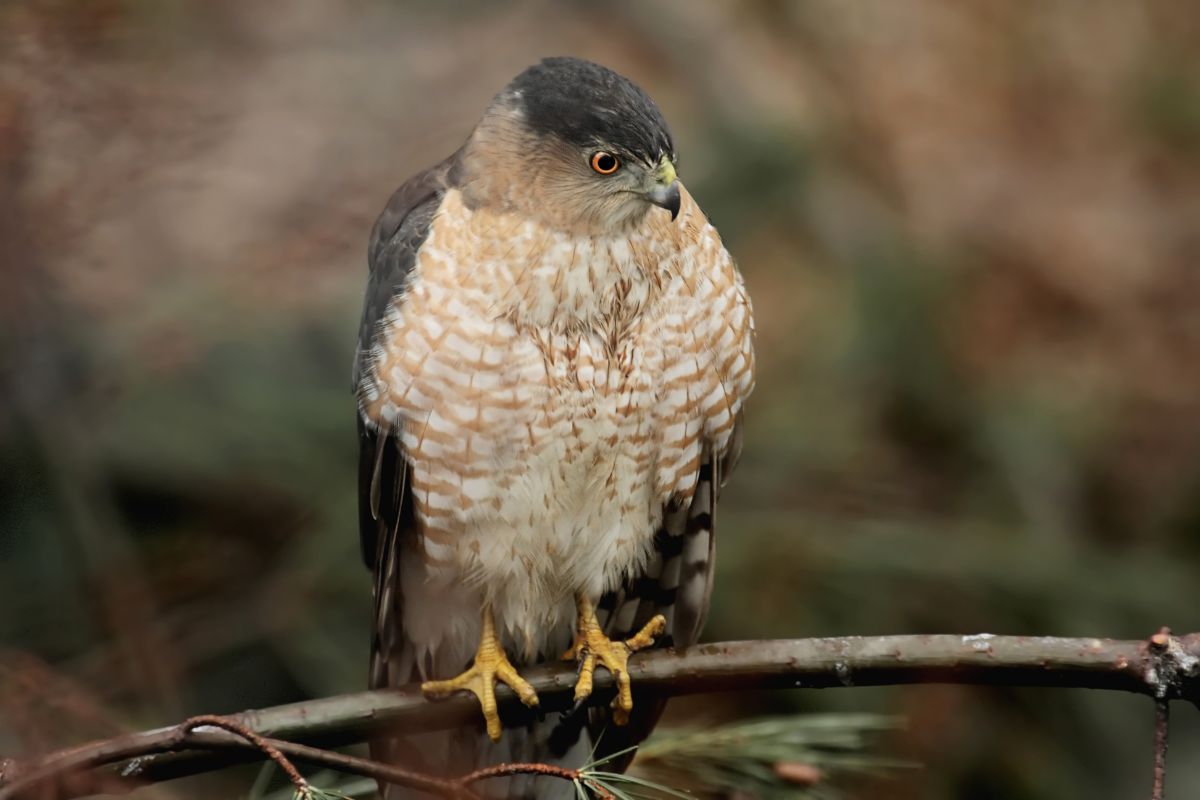
Cooper’s hawks are skillful flyers that live in the woods. They fly through the trees, attacking other birds. This method of hunting takes its toll, resulting in chest injuries and fractures. You can find them hanging around bird feeders, helping themselves to feeding birds.
17. Osprey
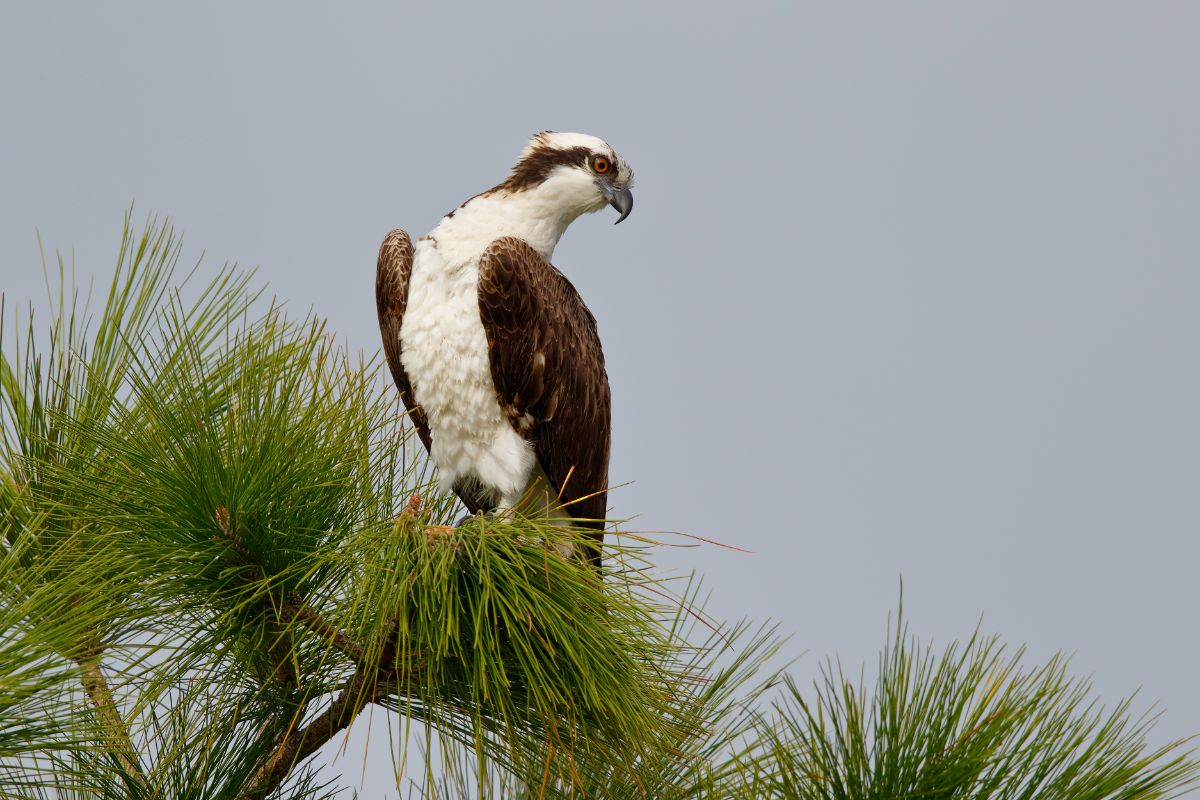
Ospreys are brown and white with hooked beaks. They are highly skilled anglers, diving into the water to catch and eat live fish. They have a reversible toe that lets them grab prey with two toes in front and two toes in back. The barbed pads on their feet help them catch and hang onto wet, slippery fish.
18. Barred Owl
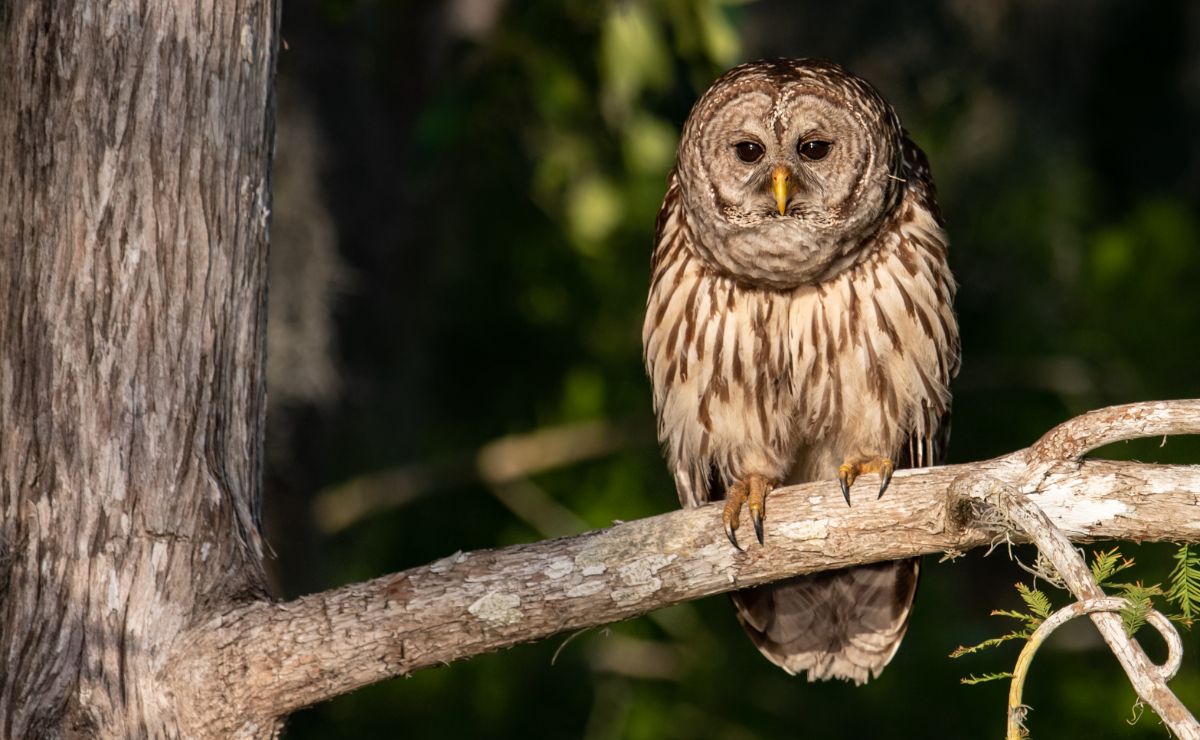
The barred owl is beloved for its distinctive call, which sounds like, “Who cooks for you? Who cooks for you all?” Their feathers form brown and white bars. Young barred owls use their beaks and talons to climb trees.
19. Eastern Screech Owl
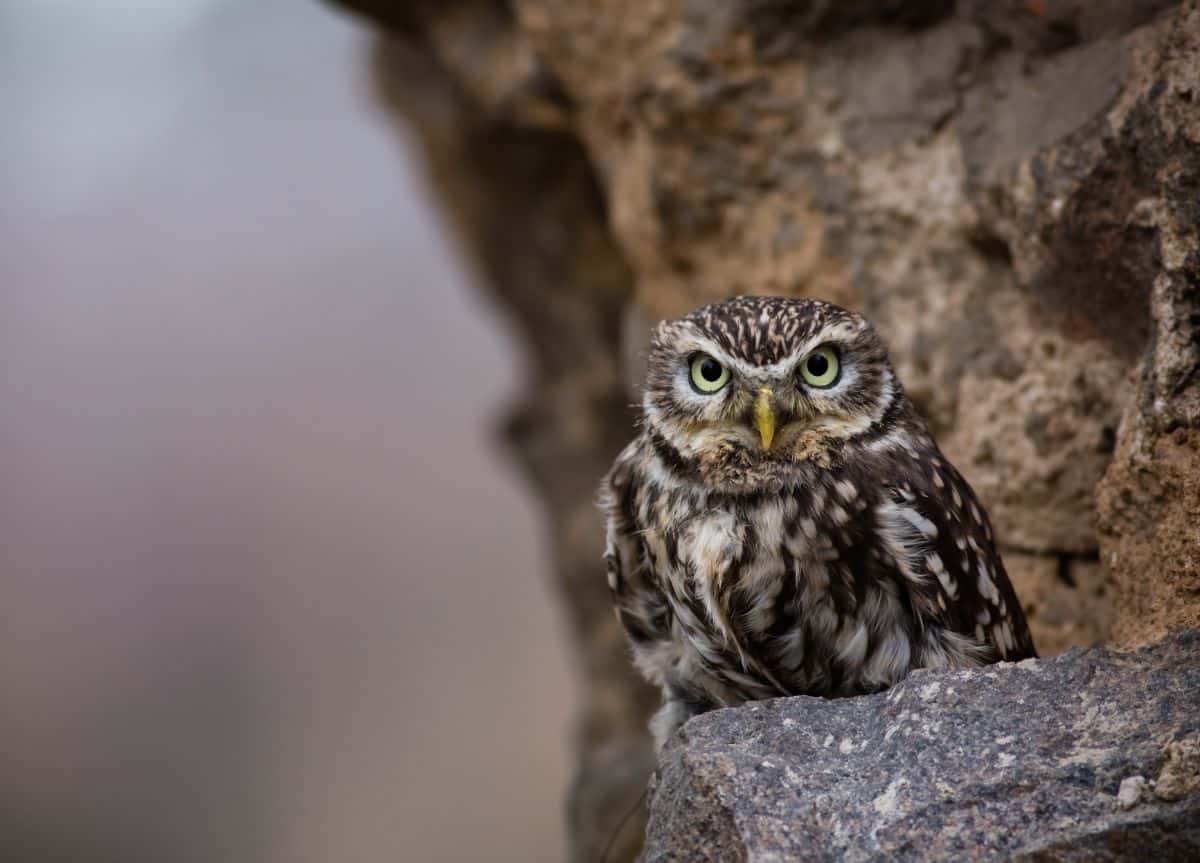
The eastern screech owl is a gray bird that camouflages perfectly in the trees where it perches. While the males are smaller than the females, they are the better hunters, and their mates and young depend on them to bring the food.
20. American Kestrel
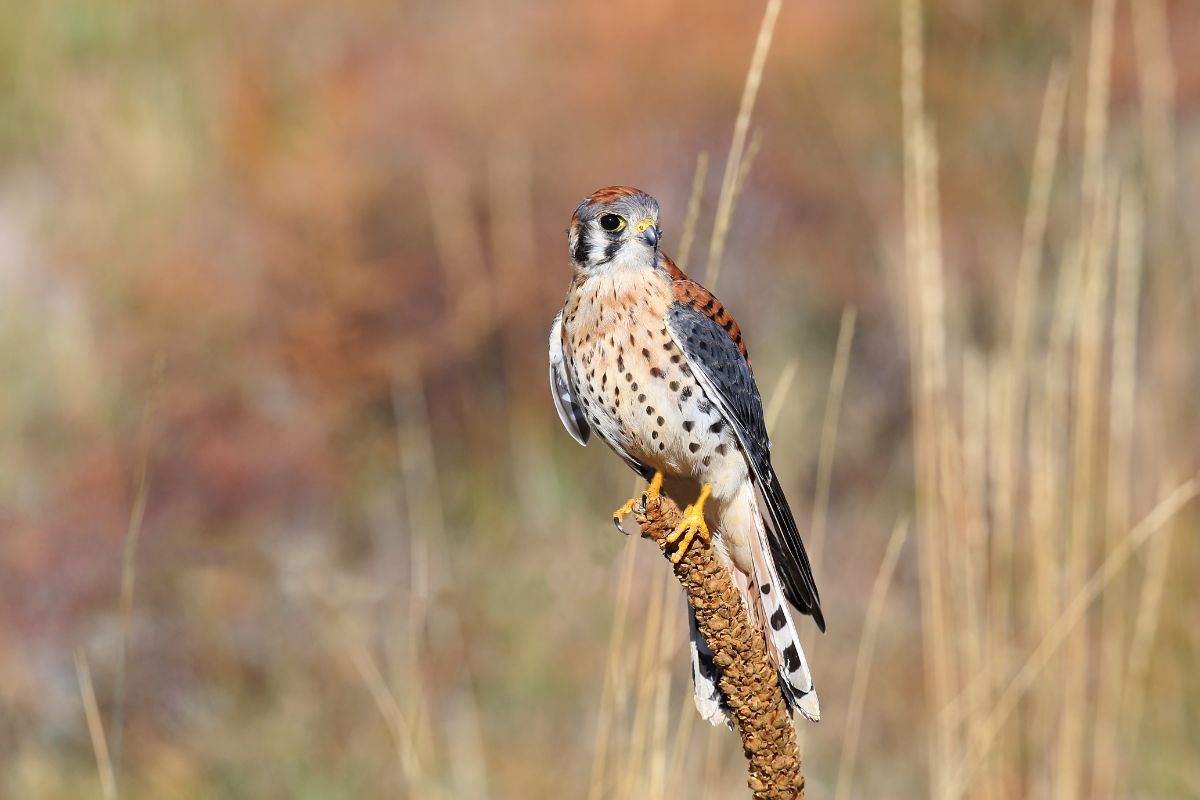
The American kestrel is North America’s smallest falcon. Because they are the smallest, they often find themselves the prey of other, larger raptors.
American kestrels perch on wires and are often present at night-time sporting events on the tops of the light poles, feasting on moths. Because they can see UV light, they can hunt voles by following the trails of urine the voles leave as they run from place to place.
21. Bald Eagle
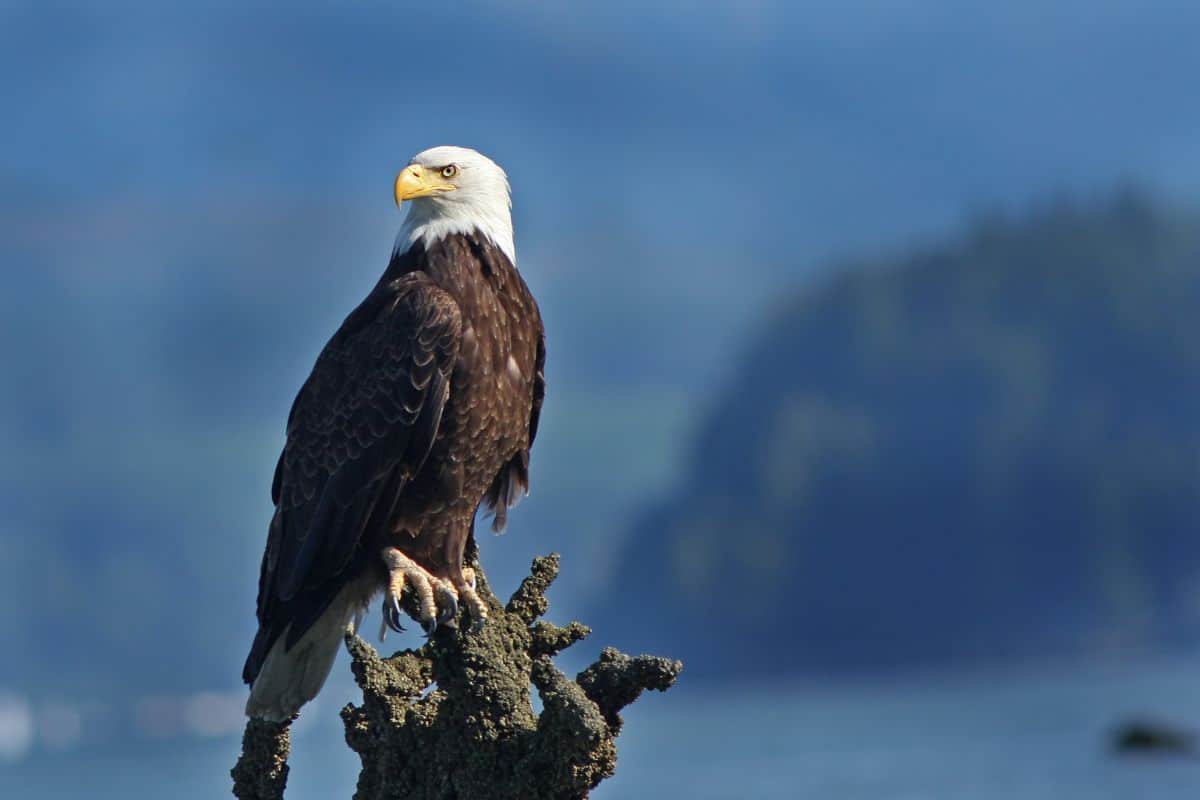
A symbol of the United States since 1782, this brown-bodied bird with a white head is majestic. The bald eagle, however, is also a bit of a bully, and Benjamin Franklin did not favor its selection. Rather than fishing for themselves, bald eagles will often harass ospreys until they drop their fresh catch. Sometimes the eagles will snatch the fish out of the osprey’s talons.
North Carolina’s Most Popular Birds
From backyard songbirds to fierce birds of prey, the birds of North Carolina are some of the most beautiful, recognizable, and fascinating during all seasons of the year.
